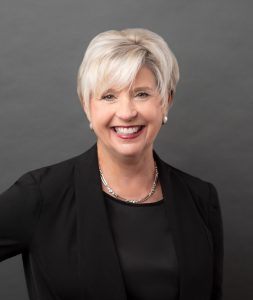June 10, 2021

Dear OADN Members:
On May 11, The Future of Nursing 2020-2030: Charting a Path to Achieve Health Equity (2021) was released after a delay due to the COVID pandemic. With good reason, the release of this new report was met with slight anxiety by those of us engaged in associate degree nursing. Many of us recall the 2011 report placed great emphasis on increasing the number of baccalaureate prepared nurses, which led to a misinterpretation by some that associate degree nursing (ADN) programs would no longer be needed. However, we know for a fact that ADN programs are essential to the health care of our country as they educate more than 50% of the newly licensed registered nursing (RN) workforce each year. I can assure you that the importance of the associate degree nursing pathway is evident in this new follow-on report.
The FON 2020 -2030 report and the nine key recommendations presented within it are expansive. The OADN Board, staff, and membership will be reviewing the report’s different components in-depth over the coming months. However, as I reviewed the findings and recommendations, I realized how present ADN programs are to the report. For example, the statement below so clearly connects to the diverse populations ADN programs serve.
Nursing schools will need to ensure that nurses are prepared to understand and identify the social determinants of health, have expanded learning experiences in the community so they can work with different people with varied life experiences and cultural values.
ADN students and faculty understand the social determinants of health better than most because they experience them every day. Community colleges are embedded in their communities, which ideally positions them to recognize and meet the evolving needs of the varied populations they serve. As I speak with many of you, I hear inspiring stories of how community colleges across the country have adapted to accommodate the unique and diverse needs of their students to fully prepare and engage them in all types of care and learning environments.
Furthermore, OADN was specifically cited and called upon in the following sub-recommendation within the FON Report:
Lead transformational change in nursing education to address workforce development in nursing and public health preparedness. The American Association of Colleges of Nursing (AACN), the National League for Nursing (NLN), and the Organization for Associate Degree Nursing (OADN) should lead transformational change in nursing education to address workforce development in disaster nursing and public health preparedness.
As CEO of OADN, I look forward to working with you on this critically important recommendation and I am committed to providing support for OADN programs with this initiative. Certainly, and for good reason, many of you are thinking of the challenges involved in adding more to your nursing curriculum, but there are numerous ways to incorporate these concepts to better prepare us for the next public health emergency. Many of you have valuable experience and extensive training in disaster nursing and public health preparedness. In the future, OADN may call upon you to provide your expertise and innovative thoughts to program development ideas.
I am also pleased to share that I represented OADN in the invitation-only Campaign Summit 2021: Health Equity through Nursing sponsored by the Center to Champion Nursing in America. The Summit gathered approximately 175 nursing leaders and healthcare experts together to begin a review of the FON recommendations and develop ideas for implementation. More will follow in the coming months, but I wanted OADN members to know your voice is being represented.
Finally, I am extremely delighted to inform you that this fall, Dr. Sue Hassmiller, Senior Scholar in Residence and Advisor to the President on Nursing at the National Academy of Medicine, will be providing a webinar for OADN members on the report, and more details will be forthcoming. If you have not had the opportunity to review the full FON 2020 – 2030 report, I encourage you to do so by following this link: The Future of Nursing 2020-2030 – National Academy of Medicine (nam.edu)
In closing, I would like to add another important focus from the new report on nurse well-being, “In order for nurses to help others be healthy and well, they must be healthy and well themselves.”
No longer can we make excuses to not care for ourselves. Like all of you, I know it is challenging as there is always one more email to answer, one more student to assist, or another clinical placement to be completed. However, I have learned that taking a few minutes to breathe, goes a long way.
Take a breath of the summer breeze and enjoy.

Donna Meyer, MSN, RN, ANEF, FAADN, FAAN
CEO, OADN